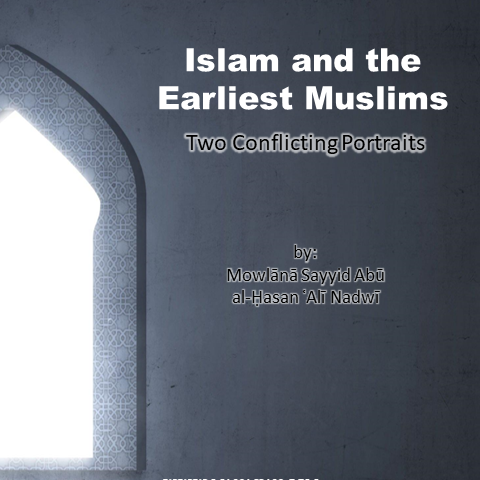Islam and the Earliest Muslims Two Conflicting Portraits
This slim volume is neither meant to demonstrate soundness of any particular creed, systems of belief or school of thoughts nor is this a polemical or scholastic effort to refute the beliefs of any sects. This work may prove disappointing to those who go through it with a view to find such matters discussed in it. There are innumerable works on the subject. Especially in languages spoken by the Muslims, such as Arabic, Persian and Urdu; so large is their number that it is not possible to touch upon them even briefly. This work seeks to present a sketch of the earliest, ideal era of Islam; the period of Rasulullah salla Llahu ‘alayhi wa sallam and his Sahabah; the new mode of thought and feelings Islam had produced; all of which was the result of Rasulullah’s salla Llahu ‘alayhi wa sallam teachings and guidance. It shows how the guidance provided by Rasulullah salla Llahu ‘alayhi wa sallam differed and surpassed the endeavours of all previous reformers and founders of religions. The first Islamic society that came to existence solely through the efforts of Rasulullah salla Llahu ‘alayhi wa sallam has been presented through the light of verifiable facts of history. The book brings out the divine scheme for the protection of the Qur’an against every form of corruption, since it was destined to remain the last revelation from Allah for the guidance of humanity. It also highlights the basic difference in the policy pursued by the harbingers of revolution and founders of empires for perpetuation of dynastic rule, on the one hand, and the prophetic system and disposition, on the other, essential for bringing man to the threshold of Allah. This distinction is also illustrated by the behaviour, character and morals of Rasulullah’s salla Llahu ‘alayhi wa sallam household. The matters discussed in this connection bring into relief the need as well as the importance of Rasulullah salla Llahu ‘alayhi wa sallam himself being the ultimate authority in every matter pertaining to creed and law from the inception of the prophetic mission to the end of time — the essentiality of the doctrine of Khatm al-Nubuwwah (finality of nubuwwah). This doctrine upheld through consensus of the Ahlus Sunnah wa l-Jama`ah, uniformly and continuously, and the way it has been perceptible throughout the life-time of Rasulullah salla Llahu ‘alayhi wa sallam and in subsequent ages has been set side by side with the beliefs and deeds of the Ithna ‘Ashariyyah (Twelvers) sect of the Shia (from its first protagonist to `Allamah Khomeini) as presented in the authentic works of their eminent theologians. It has been left to the discretion — common sense, prudence and better judgment—of the readers to form their own opinion as to which of the two portrayals is upheld by the Qur’an as well as accepted by the historians, Muslim and non-Muslim. It has been left to the judgment of the readers to decide which of the two presentations of Islam befits a Nabi who was undoubtedly the most successful nabi of Allah and the greatest guide and reformer the world has ever seen. They can decide which of the two versions is consistent with the claim of a religion to show the path of godliness and virtue to all races and nations in every time and clime, to make man loving and kind-hearted and self-sacrificing, and to raise him to the highest reaches of humanness from the level of animalism. Abu al-Hasan ‘Ali Nadwi Lucknow 19 Safar 1405 A.H /14 November 1984


